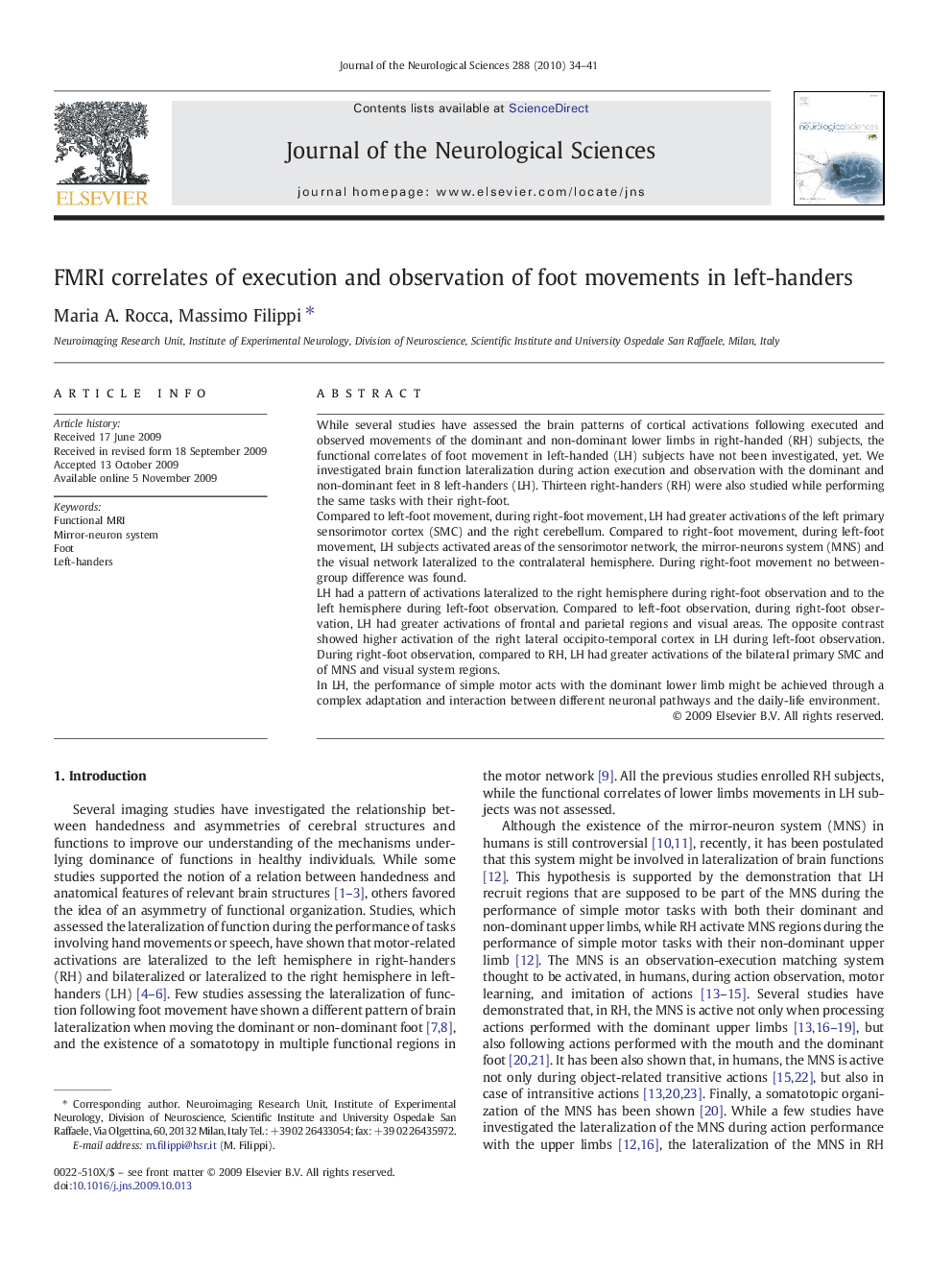| Article ID | Journal | Published Year | Pages | File Type |
|---|---|---|---|---|
| 1914751 | Journal of the Neurological Sciences | 2010 | 8 Pages |
While several studies have assessed the brain patterns of cortical activations following executed and observed movements of the dominant and non-dominant lower limbs in right-handed (RH) subjects, the functional correlates of foot movement in left-handed (LH) subjects have not been investigated, yet. We investigated brain function lateralization during action execution and observation with the dominant and non-dominant feet in 8 left-handers (LH). Thirteen right-handers (RH) were also studied while performing the same tasks with their right-foot.Compared to left-foot movement, during right-foot movement, LH had greater activations of the left primary sensorimotor cortex (SMC) and the right cerebellum. Compared to right-foot movement, during left-foot movement, LH subjects activated areas of the sensorimotor network, the mirror-neurons system (MNS) and the visual network lateralized to the contralateral hemisphere. During right-foot movement no between-group difference was found.LH had a pattern of activations lateralized to the right hemisphere during right-foot observation and to the left hemisphere during left-foot observation. Compared to left-foot observation, during right-foot observation, LH had greater activations of frontal and parietal regions and visual areas. The opposite contrast showed higher activation of the right lateral occipito-temporal cortex in LH during left-foot observation. During right-foot observation, compared to RH, LH had greater activations of the bilateral primary SMC and of MNS and visual system regions.In LH, the performance of simple motor acts with the dominant lower limb might be achieved through a complex adaptation and interaction between different neuronal pathways and the daily-life environment.
